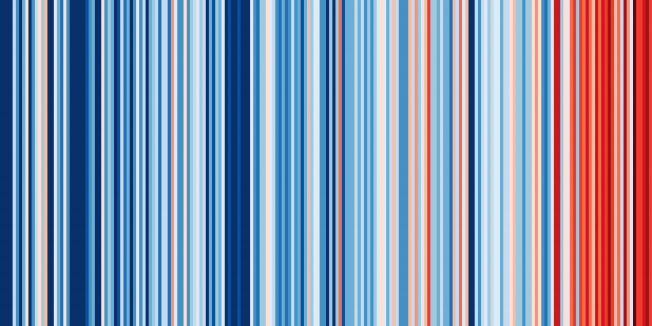Prediction and projection of heatwaves
Nature Reviews Earth and Environment Springer Nature 4 (2022) 36-50
Abstract:
Heatwaves constitute a major threat to human health and ecosystems. Projected increases in heatwave frequency and severity thus lead to the need for prediction to enhance preparedness and minimize adverse impacts. In this Review, we document current capabilities for heatwave prediction at daily to decadal timescales and outline projected changes under anthropogenic warming. Various local and remote drivers and feedbacks influence heatwave development. On daily timescales, extratropical atmospheric blocking and global land–atmosphere coupling are most pertinent, and on subseasonal to seasonal timescales, soil moisture and ocean surface anomalies contribute. Knowledge of these drivers allows heatwaves to be skilfully predicted at daily to weekly lead times. Predictions are challenging beyond timescales of a few weeks, but tendencies for above-average temperatures can be estimated. Further into the future, heatwaves are anticipated to become more frequent, persistent and intense in nearly all inhabited regions, with trends amplified by soil drying in some areas, especially the mid-latitudes. There is also an increased occurrence of humid heatwaves, especially in southern Asia. A better understanding of the relevant drivers and their model representation, including atmospheric dynamics, atmospheric and soil moisture, and surface cover should be prioritized to improve heatwave prediction and projection.Contrasting El Niño-La Niña predictability and prediction skill in 2-year reforecasts of the 20th century
Journal of Climate American Meteorological Society 36:5 (2022) 1269-1285
Abstract:
Despite the growing demand for long-range ENSO predictions beyond one year, quantifying the skill at these lead-times remains limited. This is partly due to inadequate long-records of seasonal reforecasts that make skill estimates of irregular ENSO events quite challenging. Here, we investigate ENSO predictability and the dependency of prediction skill on the ENSO cycle using 110-years of 24-month-long 10-member ensemble reforecasts from ECMWF’s coupled model (SEAS5-20C) initialised on 1st Nov/1st May during 1901-2010. Results show that Nino3.4 SST can be skilfully predicted up to ~18 lead months when initialised on 1st Nov, but skill drops at ~12 lead months for May starts that encounter boreal spring predictive barrier in year 2. The skill beyond the first year is highly conditioned to the phase of ENSO: Forecasts initialised at peak El Niño are more skilful in year 2 than those initialised at peak La Niña, with the transition to La Niña being more predictable than to El Niño. This asymmetry is related to the subsurface initial conditions in the western equatorial Pacific: peak El Niño states evolving into La Niña are associated with strong upper ocean heat discharge of the western Pacific, the memory of which stays beyond one year. In contrast, the western Pacific recharged state associated with La Niña is usually weaker and shorter-lived, being a weaker pre-conditioner for subsequent El Niño, the year after. High prediction skill of ENSO events beyond one year provides motivation for extending the lead-time of operational seasonal forecasts up to 2 years.The strong role of external forcing in seasonal forecasts of European summer temperature
Environmental Research Letters IOP Publishing 17:10 (2022) 104033
Abstract:
Since the 1980s, external forcings from increasing greenhouse gases and declining aerosols have had a large effect on European summer temperatures. These forcings may therefore provide an important source of forecast skill, even for timescales as short as a season ahead. However, the relative importance of external forcings for seasonal forecasts has thus far received little attention, particularly on a regional scale. In this study, we investigate forcing-induced skill by comparing the near-surface temperature skill of a multi-model ensemble of seasonal predictions from the Copernicus Climate Change Service archive to that of an uninitialised ensemble of Coupled Model Intercomparison Project phase 6 projections for European summers (June–July–August) spanning the years 1993–2016. As expected, predictive skill over southern Europe is larger for initialised seasonal predictions compared to uninitialised climate projections. However, for northern Europe, we find that predictive skill is generally small in current seasonal models and surprisingly even smaller compared to uninitialised climate projections. These results imply that further research is necessary to understand the role of external forcing on seasonal temperature variations over Europe.Combination of Decadal Predictions and Climate Projections in Time: Challenges and Potential Solutions
GEOPHYSICAL RESEARCH LETTERS 49:15 (2022) ARTN e2022GL098568
Abstract:
This study presents an approach to provide seamless climate information by concatenating decadal climate predictions and climate projections in time. Results for near-surface air temperature over 29 regions indicate that such an approach has potential to provide meaningful information but can also introduce significant inconsistencies. Inconsistencies are often most pronounced for relatively extreme quantiles of the CMIP6 multi-model ensemble distribution, whereas they are generally smaller and mostly insignificant for quantiles close to the median. The regions most affected are the North Atlantic, Greenland and Northern Europe. Two potential ways to reduce inconsistencies are discussed, including a simple calibration method and a weighting approach based on model performance. Calibration generally reduces inconsistencies but does not eliminate all of them. The impact of model weighting is minor, which is found to be linked to the small size of the decadal climate prediction ensemble, which in turn limits the applicability of that method.Combination of decadal predictions and climate projections in time: challenges and potential solutions
Geophysical Research Letters Wiley 49:15 (2022) e2022GL098568



